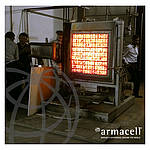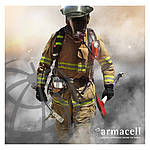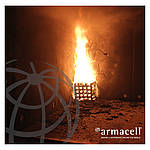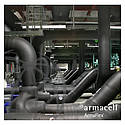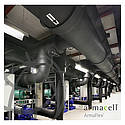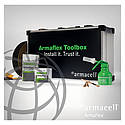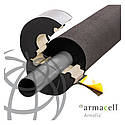OPTIMAL ENERGY EFFICIENCY AND FIRE SAFETY FOR COLD CHAIN EQUIPMENT INSULATION
Keeping cold, staying fresh
By 2100, the world’s population is estimated to reach 11 billion people and there will be major strains on natural resources including energy, minerals, food and water. Supporting a global food supply chain will require heavy refrigeration systems to prolong the shelf-life of these perishable items. This exacerbates the demands on overall energy use. Also, temperatures for refrigeration and cold chain transportation can range from -70°C (-100°F) to 0°C (31°F) and these systems are usually found in supermarkets, food processing, and transportation environments.
When operating at such low temperatures, moisture in the air will condense or freeze on or within the insulation or cold pipe surface. Hence, insulation of equipment such as chilled pipes and air handling units plays an important role in ensuring optimal energy efficiency and fire safety in the global cold chain equipment market.
The right insulation for refrigeration applications must provide condensation and moisture control within an insulation system on refrigerant piping, drains and ducts. If moisture intrudes the insulating material surrounding refrigeration piping, thermal efficiency is lost. Sufficient insulation thickness is also needed to keep the surface temperature above the highest possible design dewpoint temperature of the ambient air so condensation does not form on the surface.
Did you know that for every 1% in moisture gain, there is a 7.5% loss in thermal efficiency? Even a single percent increase in moisture will equate to a 7.5% increase in thermal conductivity. When insulation loses its ability to insulate, energy is lost and the equipment must work harder to maintain the desired chilling level. In a refrigeration system, this condition leads to energy loss and higher operating costs. A closed-cell elastomeric foam insulation, like ArmaFlex, does not require any external vapour barrier to avoid vapour ingress. Find out more about ArmaFlex in the product section.
Safety standards
We spend a significant amount on testing every year to supply customers with high-quality products ideal for their destination markets. Discover how using Armacell's compliant products provides you with a greater ease of mind. Click here or one of the images below.
Part 6 specifies a method of test for providing a comparative measure of a flat material or assembly's contribution to the growth of a fire taking into account the combined effect of several factors. Read more.
The FM approval or the FM 4924 standard is an approval requirement for insulation material used on the exterior of non-combustible pipes or ducts. This standard uses a full-scale pipe chase test for tube insulation and a full-scale room test for duct insulation (sheets). Read more.
